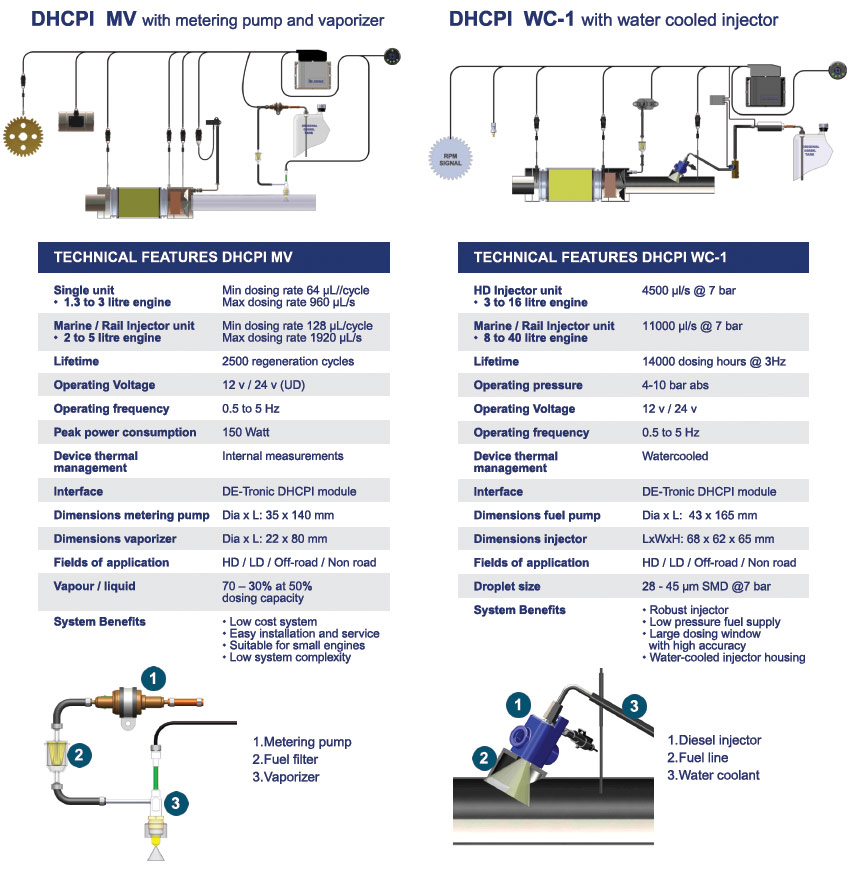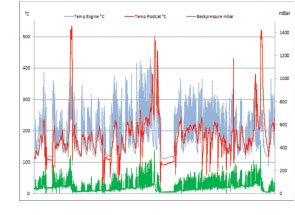
DPF Active Regeneration

The DE-TRONIC DIESEL HYDRO CARBON INJECTION MODULE has been developed to allow high efficiency DPF technology to be applied in complex situations where exhaust gas temperature is low; as with city distribution vehicles, city buses, refuse trucks, crane trucks, mobile equipment, rail and marine.

DE-TRONIC measures and registers various engine, system and application parameters and determines when the active regeneration procedure should be initiated. During active regeneration a precise amount of diesel is injected into the exhaust line to be oxidised by a catalytic reaction. This generates the required heat for soot trap regeneration. The exact volume is calculated, based upon exhaust gas flow, engine load, exhaust temperature and Soot Load Index of the filter.
DE-Tronic DHCPI benefits
• No internal engine measures needed
• No oil dilution
• One ECU for DPF and SCR
• One software for DPF and SCR
• One interface for DPF and SCR
Extra Features
Electrical Assistance
When exhaust gas temperature is extremely low the catalytic conversion of diesel hydrocarbons cannot be guaranteed and electrical preheating of the catalyst may be required. DE-TRONIC has specific outputs for electrical heaters or glow plugs.
SCR Temperature Management
To achieve high efficiency for NOx reduction with an SCR system, it is necessary to control the temperature of the exhaust carefully. DHCPI can be used to actively control the temperature in the exhaust line with the following benefits.
• Highly efficient SCR quickly after start up
• Highly efficient SCR at low load conditions (city traffic)
• No risk of by-product deposit
• Removal of deposits of AUS32 by-products in the exhaust system (crystals)
Combinations
The DHCPI module can be combined with all the other DE-Tronic modules: DATALOGGING, SYSTEM MONITORING, FBC DOSING, UREA or AMMONIA DOSING & OBD.